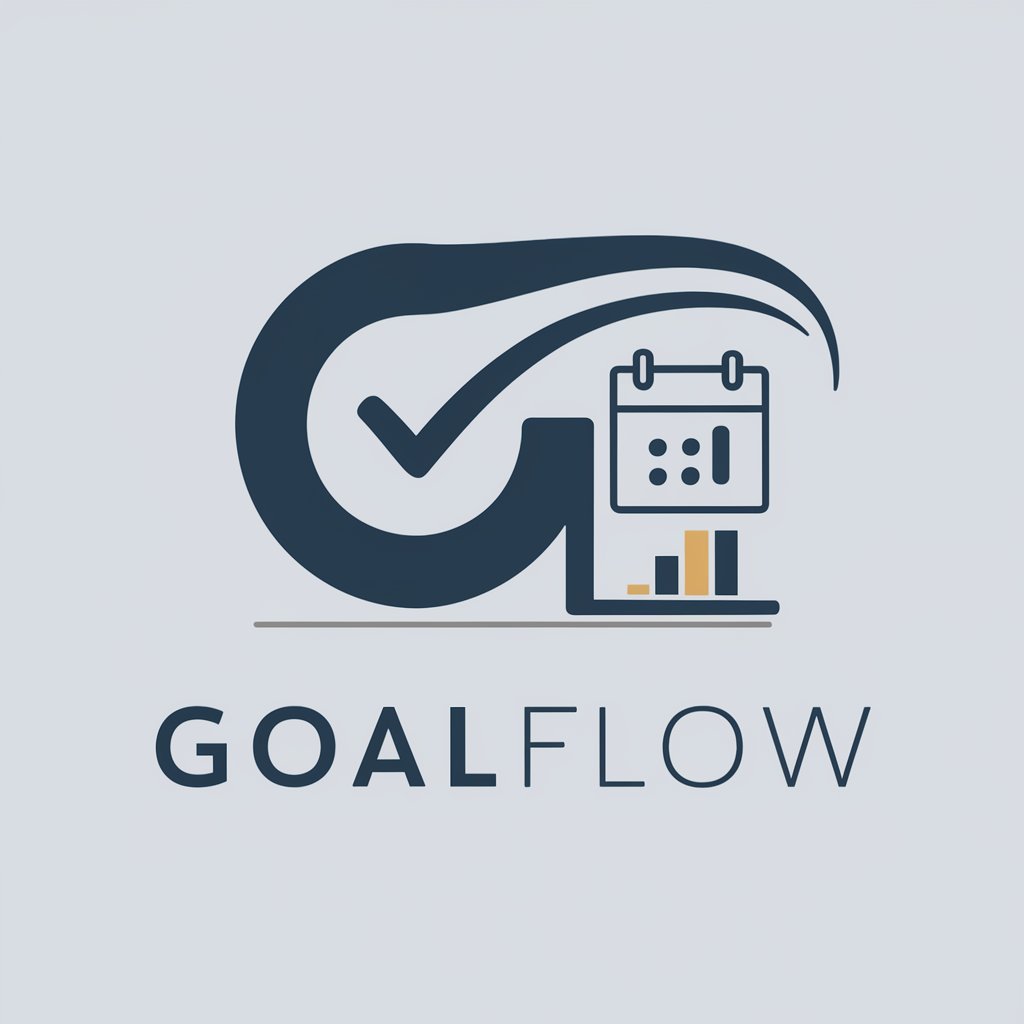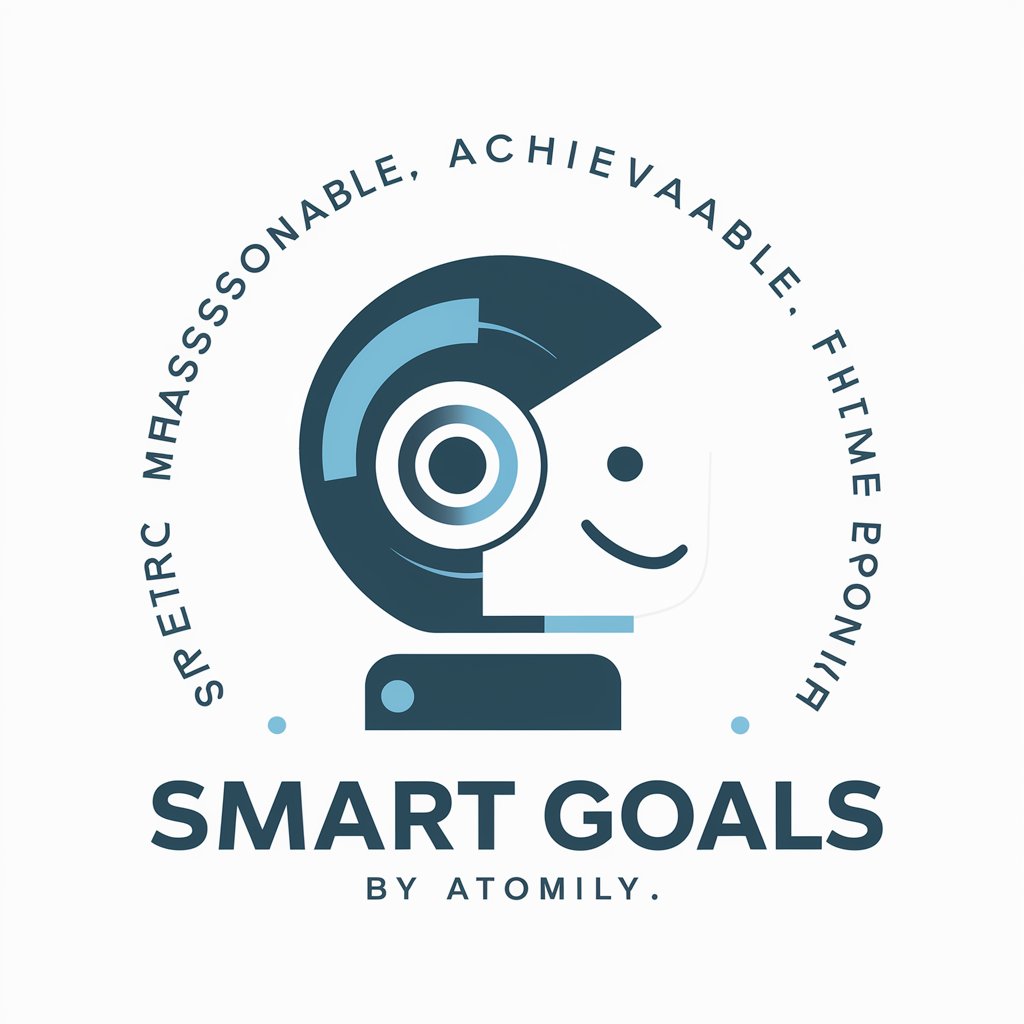
SMART Goals - Goal-Setting Framework

Welcome! Let's craft your goals with the SMART approach.
Empowering goals with AI precision
Help me set a SMART goal for improving my physical fitness by...
I want to create a SMART goal for advancing my career, specifically...
Can you assist me in developing a SMART goal for learning a new language within...
I need to set a SMART goal for managing my finances better, starting with...
Get Embed Code
Introduction to SMART Goals
SMART Goals is a structured framework designed to help individuals and organizations set clear, actionable objectives. The acronym SMART stands for 🎯 **Specific**, 📏 **Measurable**, ✅ **Achievable**, 🌟 **Relevant**, and ⏰ **Time-bound**. This methodology ensures goals are well-defined and trackable, increasing the likelihood of achievement. For example, instead of setting a vague goal like 'I want to improve my health,' a SMART goal would be 'I aim to lose 10 pounds in 3 months by exercising for 30 minutes a day, 5 days a week, and eating a balanced diet.' This approach breaks down the goal into tangible, quantifiable targets that are directly related to the outcome, making it easier to monitor progress and make adjustments as needed. Powered by ChatGPT-4o。

Main Functions of SMART Goals
Goal Clarification
Example
Turning 'I want to grow my business' into a SMART goal might involve specifying a target revenue increase of 20% within one year through expanding the customer base and introducing two new products.
Scenario
Used by entrepreneurs and business owners to refine and articulate their business growth strategies.
Progress Tracking
Example
A student sets a goal to improve their GPA to 3.5 by the end of the semester through dedicated study sessions, weekly progress reviews, and seeking extra help in challenging subjects.
Scenario
Students and educators use this function to set academic improvement goals and monitor their progress throughout the term.
Performance Improvement
Example
A sales team aims to increase sales by 15% in the next quarter by enhancing their sales pitch, increasing client meetings by 20%, and attending two industry networking events.
Scenario
Used by sales teams and managers to set performance benchmarks and identify actionable steps to meet sales targets.
Personal Development
Example
An individual sets a goal to learn a new language to conversational fluency within one year by practicing for 30 minutes daily and attending weekly language exchange meetups.
Scenario
Ideal for individuals focused on self-improvement, whether learning new skills, picking up hobbies, or enhancing personal capabilities.
Ideal Users of SMART Goals Services
Individuals Seeking Personal Growth
This group includes people who are focused on self-improvement, such as learning new skills, enhancing their health and fitness, or achieving personal milestones. They benefit from SMART Goals by having a clear, structured path to achieving their personal objectives.
Professionals and Teams
Professionals aiming to enhance their career prospects or teams working towards collective business goals. SMART Goals help in setting clear professional objectives, improving team coordination, and enhancing overall productivity.
Educators and Students
This group uses SMART Goals to set academic achievements and learning objectives. It helps students in goal-setting for academic success and educators in structuring their teaching strategies to meet students' educational needs.
Entrepreneurs and Business Owners
For entrepreneurs and business owners, SMART Goals are instrumental in strategic planning, financial growth, and operational improvements. It provides a clear framework for setting business objectives and measuring progress.

Using SMART Goals: A Step-by-Step Guide
Step 1: Initiate Your Goal-Setting Journey
Begin by visiting yeschat.ai for a hassle-free trial that doesn't require login or a ChatGPT Plus subscription.
Step 2: Define Your Goal
Identify a clear and concise goal. Utilize the 🎯 **Specific** aspect of the SMART criteria to articulate what you aim to achieve.
Step 3: Measure Success
Establish criteria for tracking progress. Apply the 📏 **Measurable** facet by setting quantifiable indicators that reflect achievement.
Step 4: Assess Feasibility
Evaluate the goal's attainability. Use the ✅ **Achievable** criterion to ensure the goal is realistic given your resources and constraints.
Step 5: Ensure Relevance and Timeliness
Confirm that the goal aligns with broader objectives (🌟 **Relevant**) and set a deadline (⏰ **Time-bound**) to foster urgency and focus.
Try other advanced and practical GPTs
Smart GPT
Empowering Creativity with AI

Smart Art
Reimagine Your World with AI Art

Smart Prompts
Elevate your queries with AI-powered precision.

Smart Shopper
AI-driven Shopping Simplified

Smart Shopper
Elevate Your Shopping with AI

GPT Shopper
Explore AI, Discover Potential

PC Builder
Empowering your build with AI

PC Customizer
Power Your Decisions with AI

PC
Empowering technology interaction with AI

PC Builder
Empowering your PC build with AI

PC Build Buddy
Empowering your PC build with AI guidance.

PaaS Builder
Empowering PaaS Innovation with AI

Frequently Asked Questions About SMART Goals
What are SMART Goals?
SMART Goals are objectives set using a specific framework that ensures they are 🎯 **Specific**, 📏 **Measurable**, ✅ **Achievable**, 🌟 **Relevant**, and ⏰ **Time-bound**. This approach facilitates clarity, focus, and motivation, enhancing the likelihood of achieving set goals.
Can SMART Goals be applied to personal life?
Absolutely. SMART Goals are versatile and can be applied to various aspects of personal development, including fitness, education, financial planning, and personal growth, to ensure goals are clear and reachable.
How can businesses benefit from SMART Goals?
Businesses can use SMART Goals for project management, employee development, and strategic planning, ensuring objectives are clear, measurable, achievable, relevant, and time-bound, which improves organizational efficiency and effectiveness.
Are SMART Goals suitable for students?
Yes, students can use SMART Goals for academic and extracurricular activities, setting clear, achievable targets for their studies, time management, and personal development, which enhances focus and academic performance.
How often should I review my SMART Goals?
Regular reviews are essential. Adjust your goals as needed based on progress and changes in circumstances, ensuring they remain 📏 **Measurable**, ✅ **Achievable**, 🌟 **Relevant**, and ⏰ **Time-bound**.





